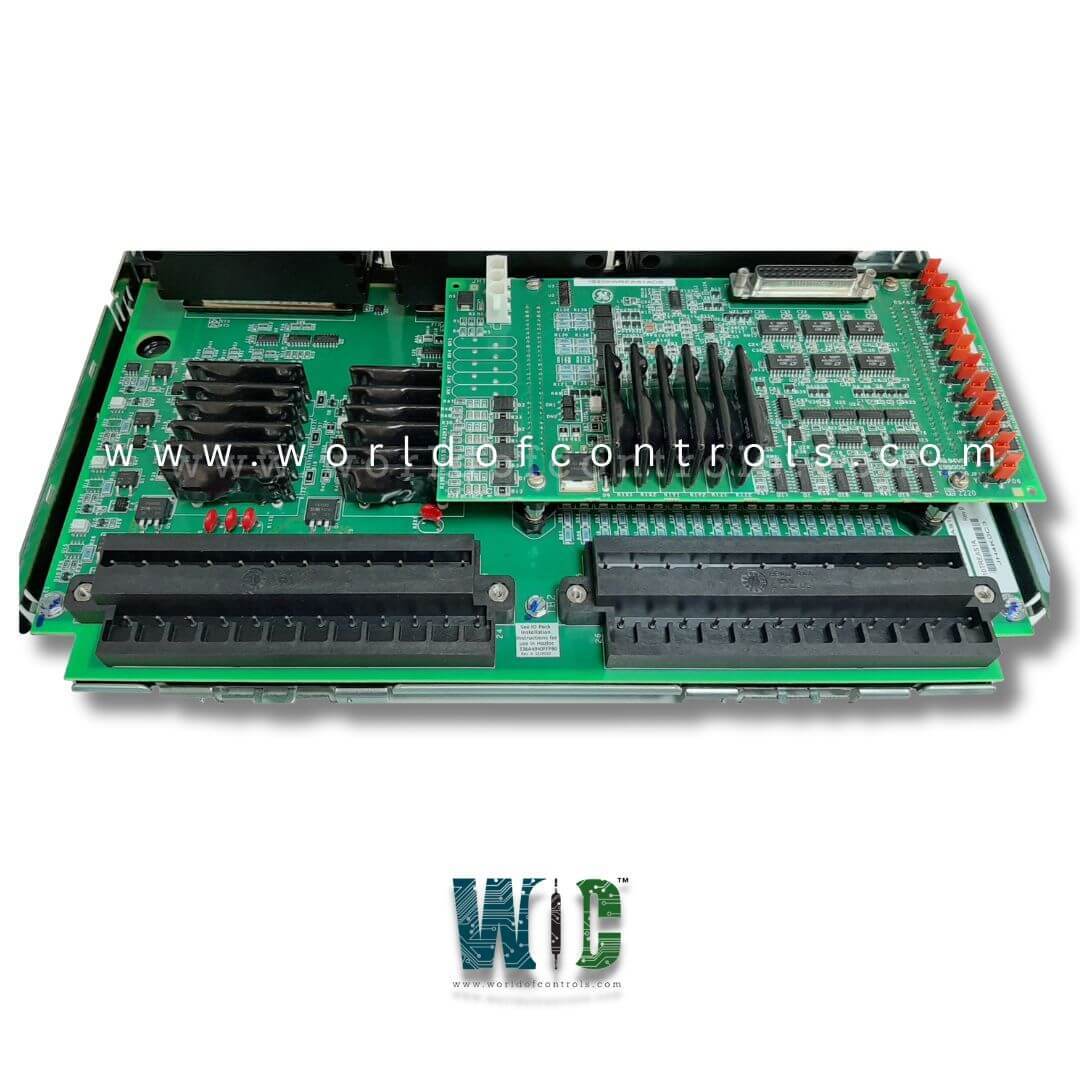SPECIFICATIONS
Part Number: IS230TREAH5A
Manufacturer: General Electric
Series: Mark VIe
Size: 33.0 cm high x 17.8 cm, wide
Temperature: -30 to 65oC
MPU pulse rate range: 2 Hz to 20 kHz
MPU pulse rate accuracy: 0.05 percent
Availability: In Stock
Product type: Turbine Emergency Trip terminal board
Country of Manufacture: United States (USA)
Functional Description
IS230TREAH5A is a Turbine Emergency Trip terminal board developed by GE. It is a part of the Mark VIe control system. The Aero Derivative Turbine Emergency Trip (TREA) terminal board, combined with the WREA card, functions as an integral part of the system. The terminal board, in conjunction with the WREA option card, integrates smoothly with PPRA turbine I/O packs, forming a cohesive part of the advanced Mark VIe control system. This integration allows for efficient management of turbine operations, ensuring robust performance and safety.
Features
- Voltage Detection Circuits: The terminal board is equipped with four 24-125 V DC voltage detection circuits. These circuits are essential for monitoring the trip string, providing real-time detection and feedback to ensure the turbine operates within safe parameters. The ability to monitor such a wide voltage range enhances the system’s versatility and reliability in various operational conditions.
- Contact Inputs for Hardware and Conditional Trip Inputs: The board also includes four 24 V DC WREAH1A or WREAS1A contact inputs. These inputs are designed to provide additional hardware or conditional trip inputs, thereby expanding the system’s capability to handle diverse emergency scenarios. Wetting power for these inputs is supplied through the JH1 connector on the WREA option card, ensuring consistent and reliable power delivery for monitoring and trip functions.
- Speed Repeater Outputs: The board supports six speed inputs, with each input having a corresponding speed repeater output. These repeater outputs reproduce the speed pulse rate signals using either an RS-232 or RS-422 transmitter. This functionality is crucial for accurately relaying speed data, which is vital for both monitoring and controlling the turbine's performance. The use of RS-232 or RS-422 transmission ensures that the speed signals are transmitted reliably over varying distances and conditions.
- Wetting Power Supply: The JH1 connector on the WREA option card supplies the wetting power necessary for the 24 V DC contact inputs. This design ensures that the contact inputs receive stable and consistent power, which is essential for the reliable operation of the emergency trip and monitoring functions.
Trip input
- The Trip input on the PPRA system can be configured to either be required or to bypass the signal. This flexibility allows operators to tailor the system to specific operational needs and safety protocols. When the Trip input is enabled, it operates through a direct hardware path on the PPRA, bypassing the PPRA firmware. This direct hardware control ensures that the Trip input functions independently of software processes, providing a more reliable and immediate response. For the Trip input to be effective, it must be powered. When enabled, the Trip input must receive power to close the trip relays, which are critical for emergency shutdowns or protective actions.
- The Trip input must be connected to a CLEAN DC source battery or a filtered (< 5% ripple) rectified AC source. Using a clean and stable power source is essential to prevent noise and interference that could affect the Trip input’s performance. A minimum of 18 V DC is required at the Trip inputs for proper operation. This voltage ensures that the Trip input functions correctly, even over long cable runs. The current required for the Trip input is kept low to minimize voltage drop across long cable runs. This design consideration helps maintain the integrity of the signal over extended distances, ensuring reliable performance.
- The Trip input is designed for very fast response times, operating in less than 5 ms. This rapid response is critical for emergency situations where immediate action is required. The output relay contacts are also designed for fast operation, with a response time of less than 1 ms. The combination of fast input and output response times enhances the overall efficiency and effectiveness of the trip system.
WOC is happy to assist you with any of your GE requirements. Please contact us by phone or email for pricing and availability on any parts and repairs.
FREQUENTLY ASKED QUESTIONS
What is IS230TREAH5A?
It is a Turbine Emergency Trip terminal board developed by GE.
What is the Trip input in the PPRA system?
The Trip input in the PPRA system is a configurable feature designed for emergency shutdown or critical action. It can be set to either require or bypass the signal, providing flexibility based on operational needs.
How does the Trip input operate within the system?
The Trip input operates through a hardware path on the PPRA, bypassing the PPRA firmware. This direct hardware control ensures fast and reliable response times, critical for emergency situations.
What is required for the Trip input to function?
The Trip input must be connected to a clean DC source battery or filtered rectified AC source. It requires a minimum of 18 V DC to operate properly, with low current requirements to minimize voltage drops over long cable runs.
